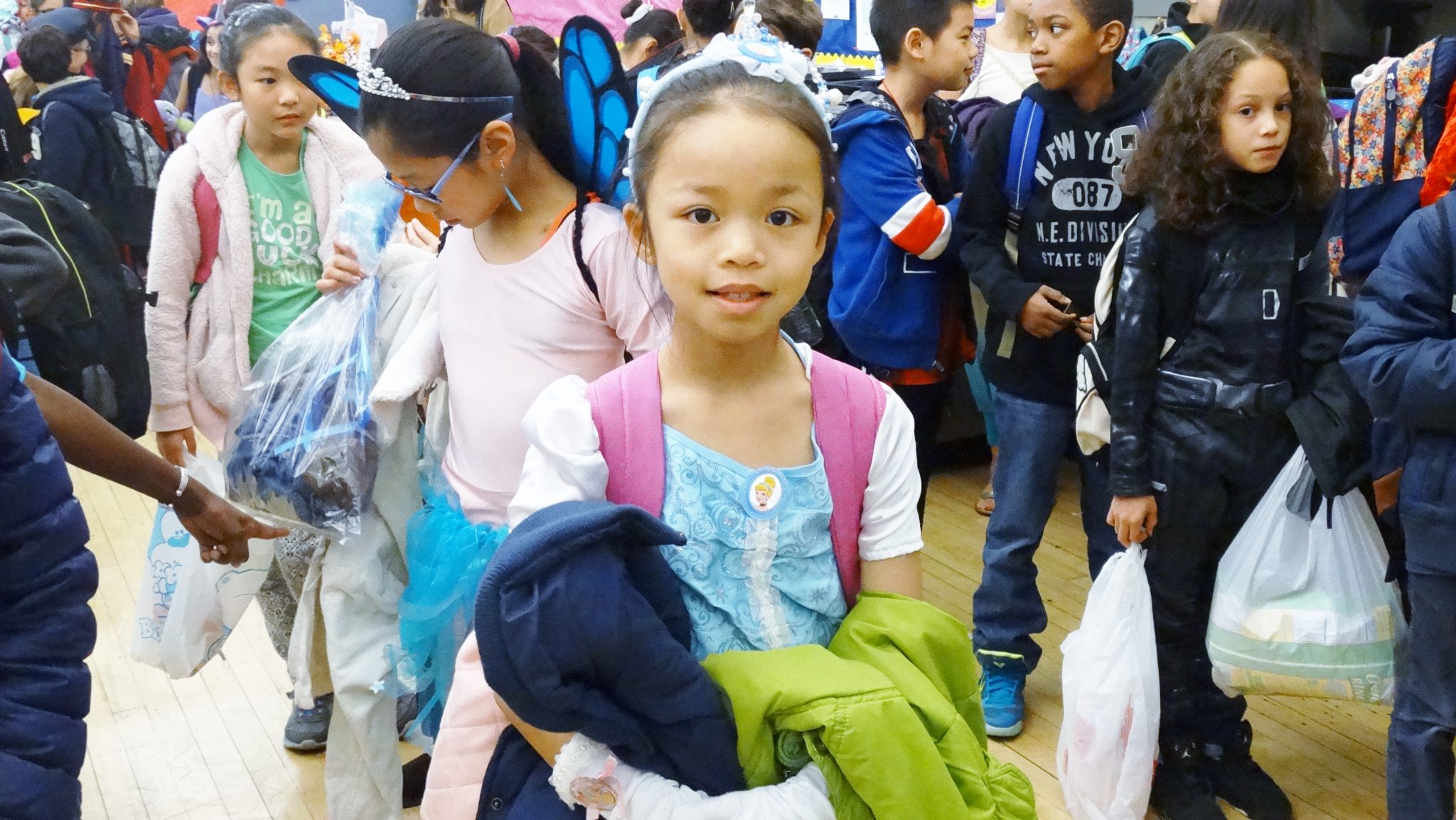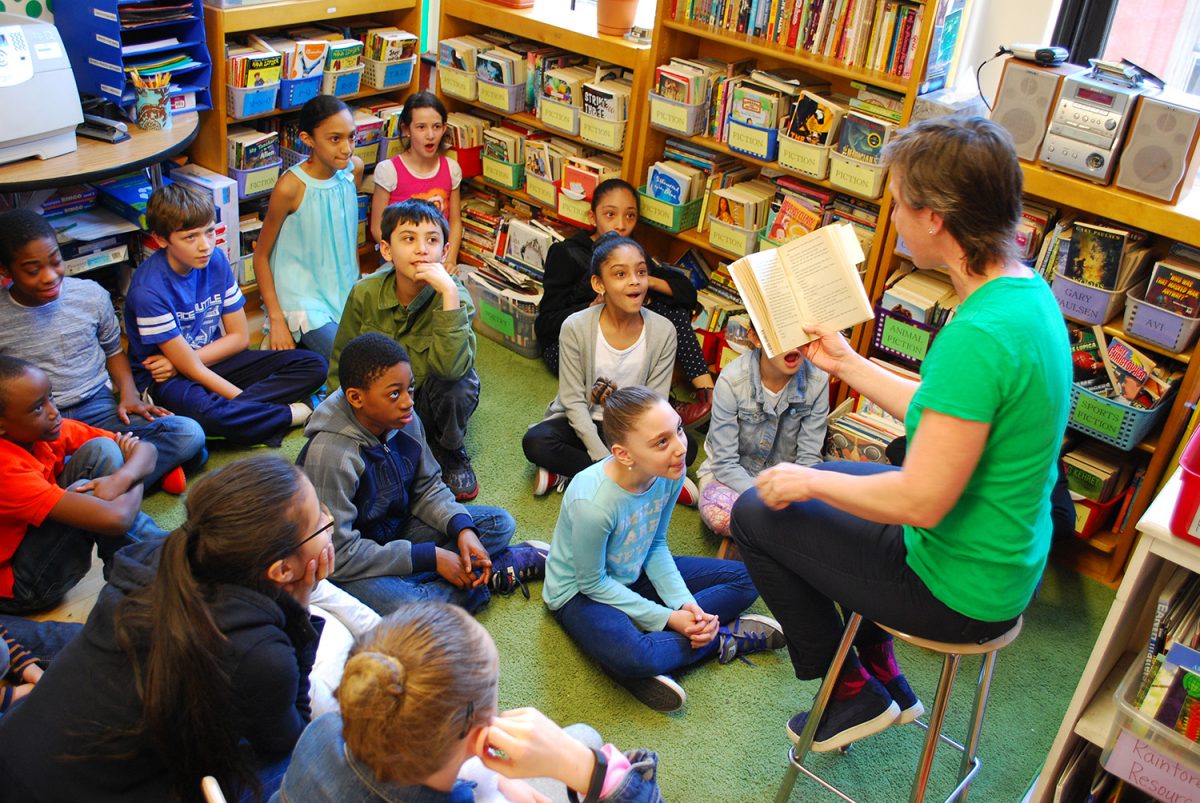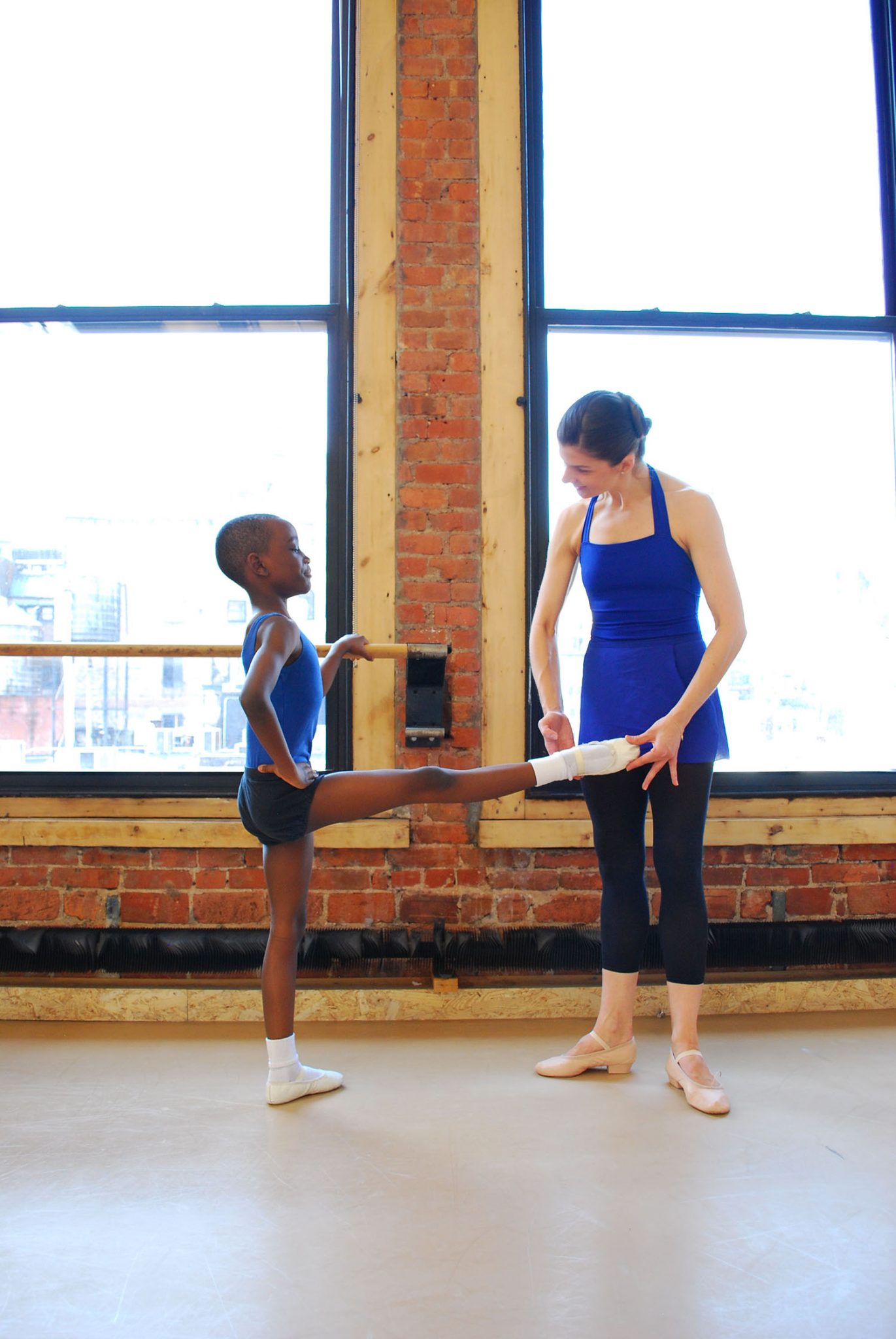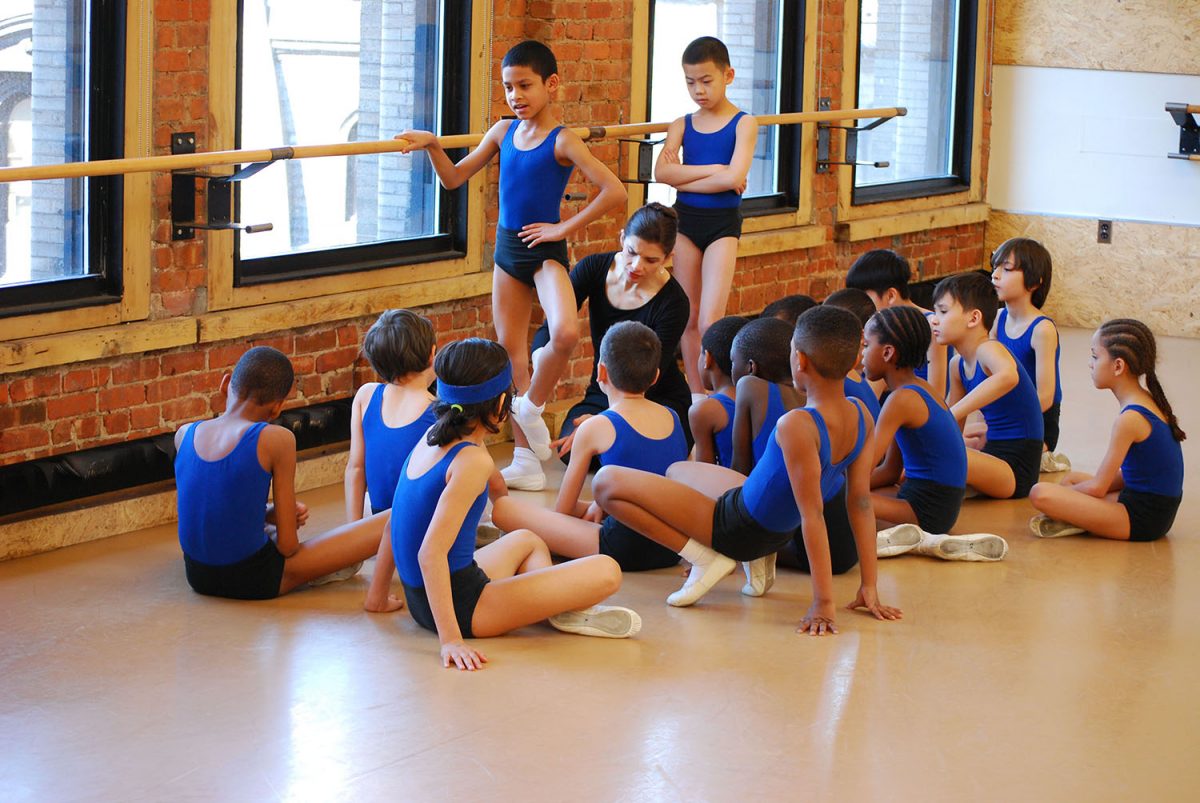The Academic Curriculum
Learning Philosophy
At Ballet Tech, we believe that children learn best in a supportive and positive environment that encourages discussion and requires critical thinking. For students to make progress and meet the demands of our high standards, in both academic and dance classes, teachers must know their students intellectually, socially, and emotionally, and support their growth from that position. While the content of subject matter varies from class to class, there is a common culture of learning based on strong work habits, collaboration, persistence and, perhaps most importantly, reflection.
Features of this common culture and learning philosophy are evident in all classrooms and include:
- Faculty and students collaborating respectfully to cultivate positive interactions that result in students feeling safe, valued, and comfortable taking intellectual risks.
- Students intellectually engaged in well-designed learning activities that require critical thinking.
- An understanding that while the work is challenging, students are capable of growing and learning if they are prepared to work hard and, if necessary, receive support from teachers prepared to meet the needs of all learners.
- Students participating in discussions to acquire and build knowledge and are challenged to support their ideas with specific text or other evidence.
- A variety of forms of feedback, from both teacher and peers, which enable students to self-assess and assume responsibility for the quality of their work.
- Students understand that learning is a process — one that requires the time and opportunity for them to revise their own thinking and make improvements to their work.
English Language Arts
In Ballet Tech’s 4th and 5th grade ELA classrooms, students study and practice the skills necessary for becoming close readers, strong writers, clear speakers, and active listeners—the foundation for the Common Core’s college readiness goals. Students read challenging literature, news articles, and other sources of information to broaden their perspectives and grow their vocabularies. They are expected to understand and clearly summarize what they have learned from readings and classroom discussions, engaging in writing tasks that require critical thinking and careful planning. They learn to communicate effectively and respectfully, holding each other accountable for their answers and explanations. Students also learn to listen attentively, considering not merely what teachers say but what is said by their fellow classmates. Some of the activities that help foster these habits and skills include but are not limited to:
- Comparing and contrasting stories that deal with similar themes or topics
- Explaining how authors use reasons and evidence to support their points or ideas
- Drawing on information from multiple books, articles, or online sources to locate an answer or to solve a problem quickly
- Learning and using new words, including words related to specific subjects (such as science words)
- Participating in class discussions by listening, asking questions, sharing ideas, and building on the ideas of others
- Writing research or opinion papers over extended periods of time
Our teachers use curricula developed by Expeditionary Learning to teach close reading skills that support our students as they read and analyze grade level texts. This program provides the necessary balance of fiction and non-fiction reading to meet the Common Core standards while at the same time engaging our young readers. As well, teachers use Columbia University’s Teacher’s College Reading and Writing Program’s Units of Study in Writing to create lessons based on a writer’s workshop model. During these lessons, students analyze grade level mentor-texts, receive instruction on the craft of writing, and develop their writing skills during independent writing time. Students refine and revise their pieces as they confer with their peers and teacher to receive and implement meaningful feedback. Students’ published writing pieces are often celebrated during class publishing parties attended by other classes and parents.
Mathematics
For students in the 21st Century, having a solid foundation in mathematics is essential to future success in school and in our modern, technologically complex world. In order to build such a foundation, students add, subtract, and multiply fractions, including fractions with unlike denominators. They continue to expand their geometry and measurement skills, learning the concept of volume and how to measure the volume of a solid figure. In 5th grade students develop their understanding of the place value system by working with decimals up to the hundredths place.
Our 4th grade teacher utilizes curricula materials from Singapore Math Program and our 5th grade teacher utilizes Illustrative Math to teach the major math concepts and skills that New York State’s Next Generation Learning Standards focuses on at each grade level.
Students often collaborate in small groups or pairs to share ideas, develop strategies, and solve problems based on real-world situations. This provides a strong setting for students to develop their math vocabulary as well as their speaking and listening skills.
Units of study incorporate these mathematical practices:
- Make sense of problems and persevere in solving them.
- Reason abstractly and quantitatively.
- Construct viable arguments and critique the reasoning of others.
- Model with mathematics.
- Use appropriate tools strategically.
- Attend to precision.
- Look for and make use of structure.
- Look for and express regularity in repeated reasoning.
Science
Children possess a natural curiosity that leads them to explore and question the world around them. Our Elementary School science classes take this natural curiosity and direct it into an environment that emphasizes a hands-on and minds-on approach to learning. By providing students with the opportunities to acquire knowledge by actively engaging in the discovery process, often working in small groups or pairs, our students make connections between what they already know and the scientific principles that guide and govern our world. Through this work students develop and strengthen the following science related skills:
- Classifying – arranging or distributing objects, events, or information representing objects or events in classes according to a method or system
- Communicating – giving oral explanations, written descriptions, and graphic representations of observations
- Comparing and Contrasting – identifying similarities and differences between or among objects, events, data, systems, etc.
- Creating Models – displaying information, using multisensory representations
- Gathering and Organizing Data – collecting information about objects and events which illustrate a specific situation
- Observing – becoming aware of an object or event by using any of the senses (or extensions of the senses) to identify properties
- Predicting – making a forecast of future events or conditions expected to exist
Our students engage in a course of study based on the New York City Science Scope and Sequence. In addition, our science classes are designed to support our students as they meet the Common Core Science Literacy Standards. Students draw information from close readings of multiple digital and print sources. They summarize these texts in order to make inferences and draw conclusions. Students often communicate their learning in a variety of formats: oral presentations, written reports, argument writing, and other applicable genres. Student presentations are showcased during school-wide events such as Open Class Week and Thursday assemblies.
Social Studies
The aim of Social Studies is to understand the relationships between people, cultures, and society. Our 4th and 5th grade students pursue this aim by engaging in a Social Studies program that is designed to help them make sense of the world in which they live. We strive to teach this content area in a way that allows our students to make connections between the major ideas explored in class and their own lives outside of school. We want to instill in them an understanding and vision of themselves as active members of a global community. Teachers design lessons that require students to think like historians, raise questions, think critically, consider many perspectives and gather information to draw conclusions. Some topics explored by our fourth and fifth graders include:
- Native Americans: First Inhabitants of New York State
- Colonial and Revolutionary Periods
- European Exploration
- Comparative Case Studies of Western Hemisphere Cultures
Our students engage in a course of study based on the New York City Social Studies Scope and Sequence. In addition, our Science and English Language Arts classes are designed to support our students as they meet the Common Core Social Studies Literacy Standards. Students draw information from close readings of multiple digital or print sources and summarize text in order to make inferences and draw conclusions. Students often communicate their learning in variety of formats: oral presentations, written reports, essays, argument writing, and other applicable genres. Student presentations are showcased during school-wide events such as Open Class Week or Thursday assemblies.
Spanish
Ballet Tech is committed to providing students with a robust and well-rounded learning experience, one that includes learning a foreign language. Studies show that early exposure to foreign languages produces long-term cognitive and academic benefits. Adolescents in particular have a unique ability to absorb language and learn pronunciation. Ballet Tech utilizes that innate ability and gives students a wide variety of activities and teaching methods to keep them interested in learning Spanish. While this course only meets once a week, specific and solid teaching techniques are implemented to turn basic language activities into rigorous lessons in grammar, communication, and vocabulary.
Visual Art
Ballet Tech’s Visual Arts program is deeply committed to both the artistic and academic development of each student.
In the Elementary School, the primary focus is to introduce students to a wide variety of art materials and techniques. Students develop art practices in still life drawing, paper mache sculpture, printmaking, sewing, collage, clay, architectural studies, scratchboard, and design. All students keep sketchbooks to deepen their artistic practice.
At the end of each year, there is an annual Student Art Exhibit which celebrates the artistic achievement and collaborations of all students in the school.
There is great enthusiasm for all arts at Ballet Tech, a school founded on the belief that the arts play an integral role in the development of the child’s mind, body, and creative spirit.
The Dance Curriculum
Curriculum
In Elementary School, ballet technique classes are an hour and a half and are incorporated into the regular school day. Exercises are designed to be fun while developing muscular control, body awareness, rhythm, and vocabulary.
In their ballet classes, Elementary School students:
- Learn and retain basic ballet vocabulary
- Learn basic form, proper placement and alignment
- Have an understanding of the 8 classical ballet positions
- Understand the use of épaulement (the relationship of the head and shoulders to the feet)
- Develop coordination of the entire body
4th Grade
Weekly classes:
2 Ballet Technique classes
2 Conditioning classes
1 Creative Movement class
5th Grade
Weekly Classes:
3 Ballet Technique classes
2 Conditioning classes
In 5th Grade, students are introduced to putting steps together while making simple changes of weight and direction. They develop strength in preparation for more advanced work.
The Summer Session
Each summer, Ballet Tech Foundation offers its incoming and continuing students a 4-week summer dance program. Participation in the Summer Session is recommended, but not required.
In addition to their regular dance classes, students take classes that are not offered during the academic school year.
The 2023 Summer Session is scheduled for July 10 – August 4. The summer class schedule and registration forms will be distributed to families in late Winter 2023.
Facilities
Ballet Tech’s facilities include five dance studios. The studios have marley-covered, sprung-wood floors, mirrored walls, and 13 foot ceilings.


















